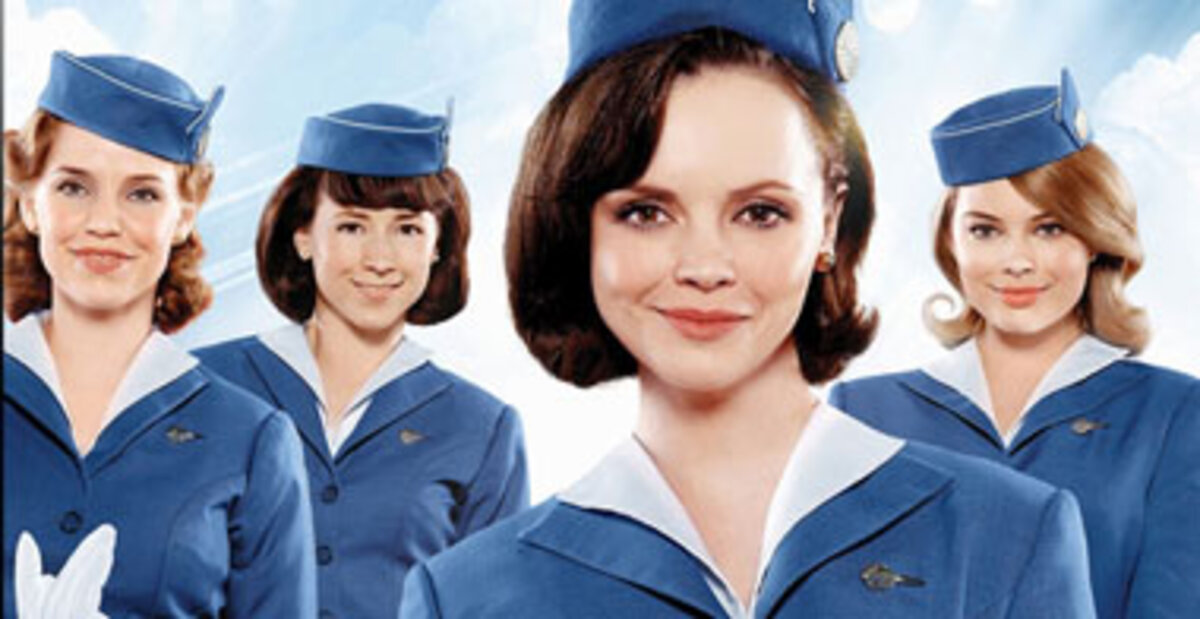'Pan Am' has a lot to keep track of, but is fun drama
Loading...
Does Pan Am capture the glamor and romance of jet age travel, or simply imitate the success of a certain other 60′s shows?
follows the lives of four stewardesses (not flight attendants) and one pilot, all crewing a brand new jetliner in 1963. Pan American is the biggest airline in the United States, the pilots are gods among men and the stewardesses are icons of freedom and grace. Behind the veil of marketing, the women are subjected to supermodel standards of beauty, which combine with a difficult and nerve-wracking career to set them all on edge. In reality, the pilots… are basically extremely well-trained playboys.
The primary source of drama comes from Maggie (, Monster) and sisters Kate (Kelli Garner, Going the Distance) and Laura (‚Äč). Maggie is the incredibly pragmatic leader of the stewardesses, devoted to the company despite its casual abuse. Her personal relationships are sacrificed to her job ‚Äď not that she particularly cares.
The larger section of the pilot is devoted to Kate and Laura. Kate is being recruited by a mysterious G-man and given an assignment to bug a soviet operative for Uncle Sam, with the promise of more patriotic service to come. Laura (‚Äúthe pretty one‚ÄĚ) joins with Pan Am after leaving her fiance at the alter. Her popularity is bolstered by being featured on the cover of LIFE Magazine, which instantly re-kindles a lifetime of sibling rivalry.
Romantic aspects of the show are largely given to pilot Dean (, Cloverfield) and Colette (‚Äč). Dean is engaged to a former stewardess with a wanderlust, whom we see in a series of flashbacks that permeates the episode. Colette panics when her married boyfriend appears on the group‚Äôs first flight with his wife and child.
The first thing that pops out when watching the Pan Am premiere is the branding: if Pan American Airlines hadn’t folded twenty years ago, you’d think this was the biggest piece of scripted advertising since The Wizard. The image of the airline, the industry and the (at least somewhat fictional) culture is seen in every moment of the pilot, making Pan Am a love letter to the era instead of a realistic look at history.
This attitude stretches to the entire production. The computer generated planes and flawless sets sparkle; I’d say there was Vaseline on the lens if it wasn’t in HD. It makes for an enjoyable atmosphere, even if it clashes somewhat with the involved personal dramas being presented. The swingy period music is a real treat for fans of the genre, making the pilot feel more like Catch Me If You Can than .
Considering the themes of female liberation that Pan Am is trying to present, it‚Äôs rather disappointing that the show falls back on such well-trodden soap opera tropes. The spurned mistress, the ruthless professional and the jealous sister ‚Äď all of these are characters we‚Äôve seen before. While showing the double standards that women faced fifty years ago quite well, the writers have unfortunately forgotten to show the characters doing anything except tacitly accepting them, even while they‚Äôre being presented as ‚Äúa new breed of woman.‚ÄĚ The results can‚Äôt help but seem bland.
As for the story itself, there’s a lot to like. The most interesting sections deal with Kate handling spy duties while serving drinks and telling passengers to buckle up. These are more tense than exciting, but they promise a lot more to come. Dean’s pining comes off as a little pathetic until the gotcha moment at the end of the episode, when the stakes for actual danger are raised considerably.
The rest of the characters I could take or leave. Ricci tries her best, but she isn’t given a lot to work with considering that she’s the headliner. Maggie is the same uncompromising career woman we’ve seen dozens of times before, made somewhat unbelievable considering she’ll be given the boot the instant she turns 32. Colette is charming but ultimately irrelevant, at least for now.
The larger problem is an overabundance of leads. This stretches the pilot to the breaking point, often leaving the viewer too confused between the stories of half a dozen characters, all of which get their own flashbacks. (The fetching but identical sky-blue uniforms don’t help.) This is a common problem among TV pilots, and some of the characters will likely fade into the background later into the season, but there’s a definite lack of focus on display.
Take the Bay of Pigs flashback: the scene suddenly shifts to months before, where Maggie, Dean and his future bride-to-be are evacuating the last group of prisoners exiles out of Castro’s Cuba on a Pan Am prop plane. This historically significant segment is shoved into a few short minutes just to highlight Dean’s failed relationship, when it could have been a couple of showpiece episodes later on in the series.
If you’re aching for a glittery presentation of 1960s, Pan Am hits the spot. The generous production design, costumes and music are delightful, and they make for a much lighter atmosphere than . As for the show itself, it seems like a tame version of Grey’s Anatomy, minus the life-and-death drama (though that could easily be coming). While a lack of focus hampers the first episode, those looking for a historical take on ABC’s soap opera formula will be entertained.
Pan Am isn’t hard-hitting social commentary but it’s enjoyable enough. Provided the show can find a more concentrated story (and get people to care about at least some of the leads), it may find a niche despite the bumpy landing.
Michael Crider blogs at Screen Rant.




